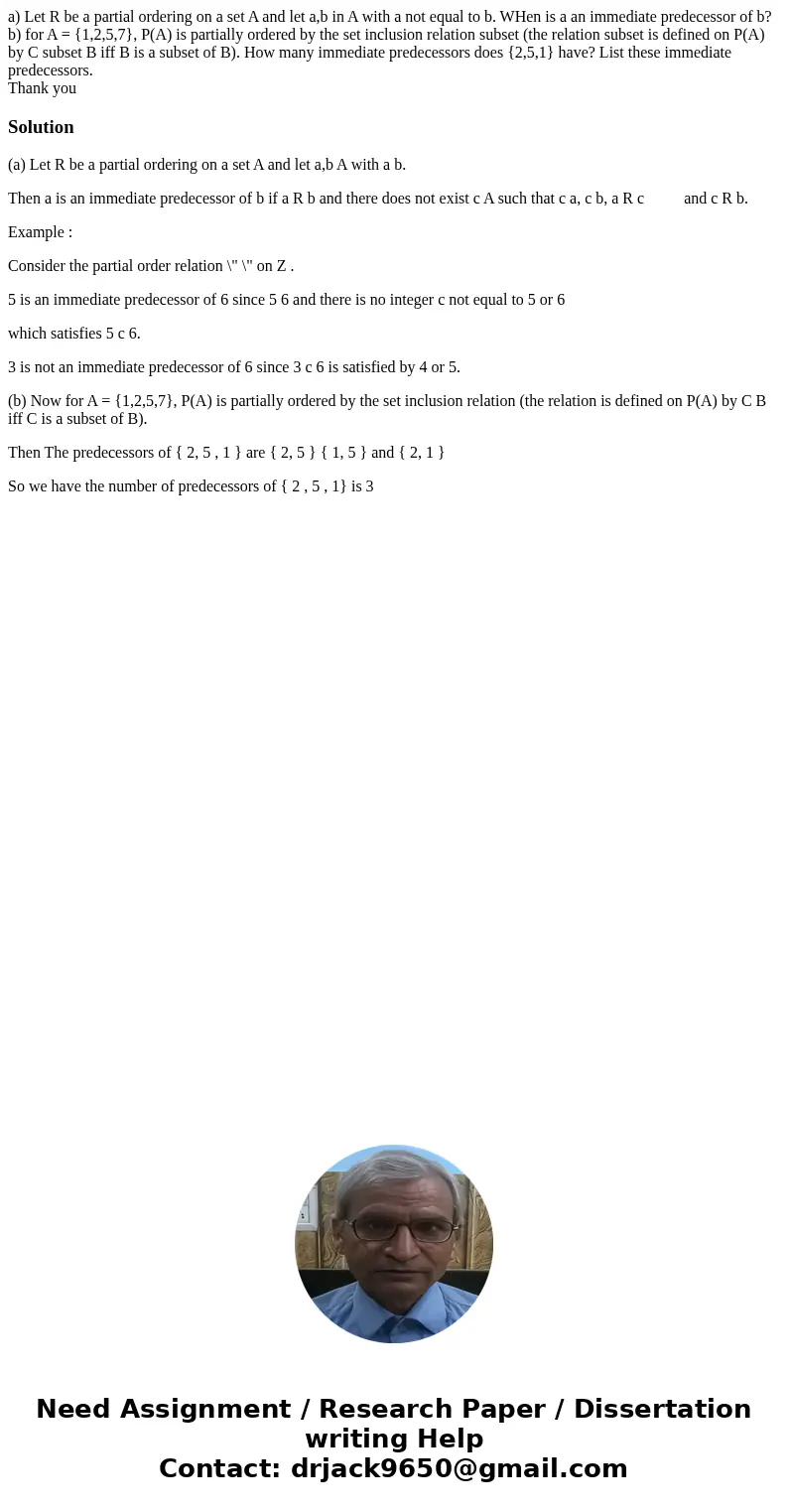a Let R be a partial ordering on a set A and let ab in A wit
a) Let R be a partial ordering on a set A and let a,b in A with a not equal to b. WHen is a an immediate predecessor of b?
b) for A = {1,2,5,7}, P(A) is partially ordered by the set inclusion relation subset (the relation subset is defined on P(A) by C subset B iff B is a subset of B). How many immediate predecessors does {2,5,1} have? List these immediate predecessors.
Thank you
Solution
(a) Let R be a partial ordering on a set A and let a,b A with a b.
Then a is an immediate predecessor of b if a R b and there does not exist c A such that c a, c b, a R c and c R b.
Example :
Consider the partial order relation \" \" on Z .
5 is an immediate predecessor of 6 since 5 6 and there is no integer c not equal to 5 or 6
which satisfies 5 c 6.
3 is not an immediate predecessor of 6 since 3 c 6 is satisfied by 4 or 5.
(b) Now for A = {1,2,5,7}, P(A) is partially ordered by the set inclusion relation (the relation is defined on P(A) by C B iff C is a subset of B).
Then The predecessors of { 2, 5 , 1 } are { 2, 5 } { 1, 5 } and { 2, 1 }
So we have the number of predecessors of { 2 , 5 , 1} is 3

 Homework Sourse
Homework Sourse